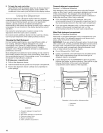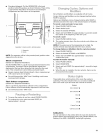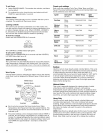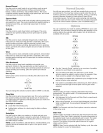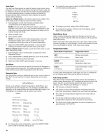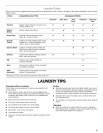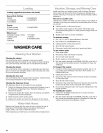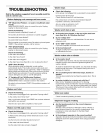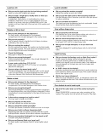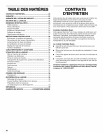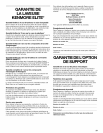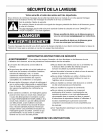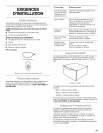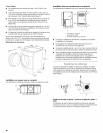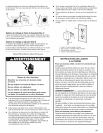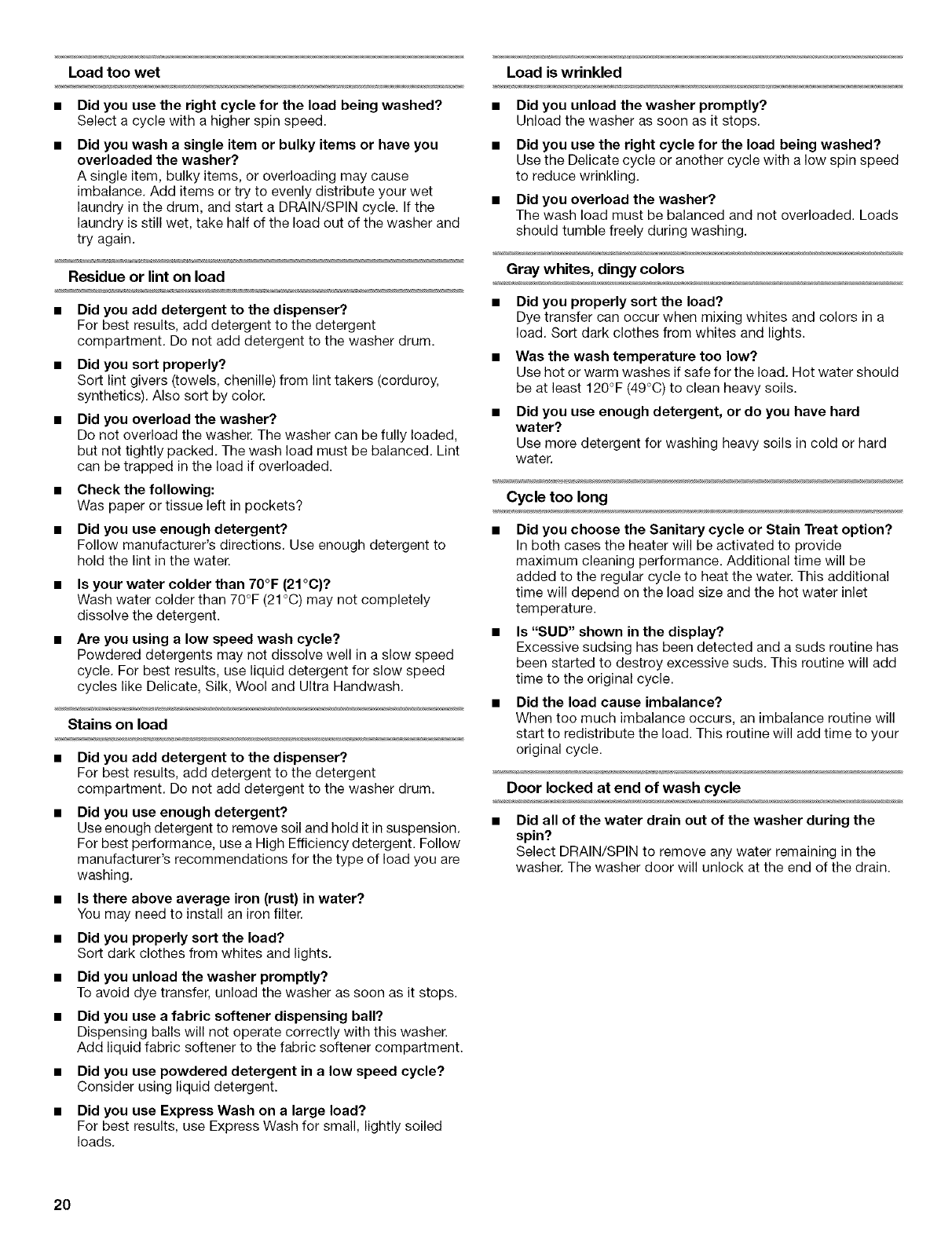
Load too wet
• Did you use the right cycle for the load being washed?
Select a cycle with a higher spin speed.
Did you wash a single item or bulky items or have you
overloaded the washer?
A single item, bulky items, or overloading may cause
imbalance. Add items or try to evenly distribute your wet
laundry in the drum, and start a DRAIN/SPIN cycle. If the
laundry is still wet, take half of the load out of the washer and
try again.
Residue or lint on load
• Did you add detergent to the dispenser?
For best results, add detergent to the detergent
compartment. Do not add detergent to the washer drum.
• Did you sort properly?
Sort lint givers (towels, chenille) from lint takers (corduroy,
synthetics). Also sort by color.
Did you overload the washer?
Do not overload the washer. The washer can be fully loaded,
but not tightly packed. The wash load must be balanced. Lint
can be trapped in the load if overloaded.
• Checkthe following:
Was paper or tissue left in pockets?
• Did you use enough detergent?
Follow manufacturer's directions. Use enough detergent to
hold the lint in the water.
• Is your water colder than 70°F (21°0)?
Wash water colder than 70°F (21°C) may not completely
dissolve the detergent.
Are you using a low speed wash cycle?
Powdered detergents may not dissolve well in a slow speed
cycle. For best results, use liquid detergent for slow speed
cycles like Delicate, Silk, Wool and Ultra Handwash.
Stains on load
• Did you add detergent to the dispenser?
For best results, add detergent to the detergent
compartment. Do not add detergent to the washer drum.
Did you use enough detergent?
Use enough detergent to remove soil and hold it in suspension.
For best performance, use a High Efficiency detergent. Follow
manufacturer's recommendations for the type of load you are
washing.
• Is there above average iron (rust) in water?
You may need to install an iron filter.
• Did you properly sort the load?
Sort dark clothes from whites and lights.
• Did you unload the washer promptly?
To avoid dye transfer, unload the washer as soon as it stops.
• Did you use a fabric softener dispensing ball?
Dispensing balls will not operate correctly with this washer.
Add liquid fabric softener to the fabric softener compartment.
• Did you use powdered detergent in a low speed cycle?
Consider using liquid detergent.
• Did you use Express Wash on a large load?
For best results, use Express Wash for small, lightly soiled
loads.
Load iswrinkled
Did you unload the washer promptly?
Unload the washer as soon as it stops.
Did you use the right cycle for the load being washed?
Use the Delicate cycle or another cycle with a low spin speed
to reduce wrinkling.
Did you overload the washer?
The wash load must be balanced and not overloaded. Loads
should tumble freely during washing.
Gray whites, dingy colors
• Did you properly sort the load?
Dye transfer can occur when mixing whites and colors in a
load. Sort dark clothes from whites and lights.
• Was the wash temperature too low?
Use hot or warm washes if safe for the load. Hot water should
be at least 120°F (49°C) to clean heavy soils.
Did you use enough detergent, or do you have hard
water?
Use more detergent for washing heavy soils in cold or hard
water.
Cycle too long
Did you choose the Sanitary cycle or Stain Treat option?
In both cases the heater will be activated to provide
maximum cleaning performance. Additional time will be
added to the regular cycle to heat the water. This additional
time will depend on the load size and the hot water inlet
temperature.
Is "SUD" shown in the display?
Excessive sudsing has been detected and a suds routine has
been started to destroy excessive suds. This routine will add
time to the original cycle.
Did the load cause imbalance?
When too much imbalance occurs, an imbalance routine will
start to redistribute the load. This routine will add time to your
original cycle.
Door locked at end of wash cycle
Did all of the water drain out of the washer during the
spin?
Select DRAIN/SPIN to remove any water remaining in the
washer. The washer door will unlock at the end of the drain.
20



